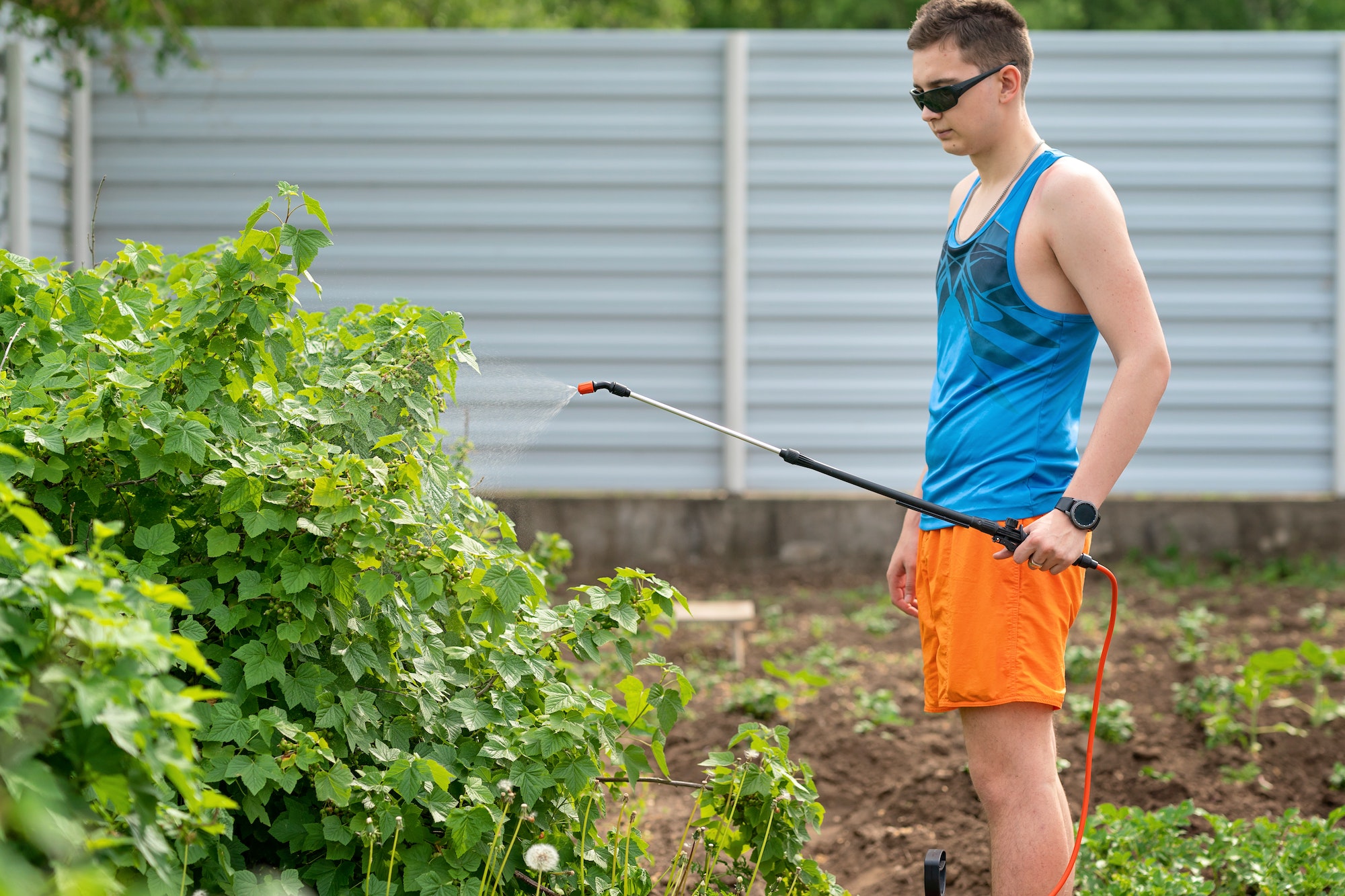Give Your Trees the Care They Deserve with Professional Injections
Is your tree looking weak, discolored, or struggling with disease? Just like people need medicine to recover, trees sometimes require direct treatment to restore their health. Tree injections provide a fast, effective, and environmentally friendly way to deliver essential nutrients, antibiotics, and pest control treatments directly into your tree’s system.
At American Tree Experts, we specialize in professional tree injection services that strengthen trees, prevent disease, and help them thrive for years to come. Whether your tree is battling a fungal infection, pest infestation, or nutrient deficiency, we have the solution.
Let’s dive into how tree injections work, why they’re so effective, and why your trees might need them now more than ever.
Techniques of Tree Injections
Tree injections have been used for over three decades, but modern methods have improved efficiency and minimized harm to trees. The main techniques include:
Macro-Infusion: Large-Scale Tree Treatment
✅ Best for: Large trees requiring treatment across their entire system
✅ Method: Injects a high volume of diluted chemicals (up to 50 gallons) into the tree
✅ Downside: Requires drilling into the trunk, which may cause wounds that could expose the tree to pests or fungi
Microinjections: Precise, Low-Impact Treatment
✅ Best for: Targeted tree care with minimal damage
✅ Method: Uses small injection sites under the bark with only 1-10 mL of concentrated nutrients or treatments
✅ Advantage: Requires less chemicals and causes less harm to the tree structure
✅ Efficiency: Works quickly, allowing trees to absorb and distribute treatments immediately
Unlike macro-infusion, microinjections do not require drilling into the trunk, making them a preferred choice among professional arborists.
⚠️ Potential Downsides to Tree Injections
While tree injections are highly effective, there are a few considerations to keep in mind:
- Slow Absorption: Trunk injection formulations take time to distribute, sometimes weeks.
- Risk to Beneficial Insects: Some treatments may affect non-target organisms, including pollinators.
- Tree Wounds & Decay: Improper injections can make trees vulnerable to pests, fungi, or internal decay.
To ensure safe and effective treatment, always consult a certified tree care expert before opting for tree injections.
Why Does a Tree Need Injection?
Trees may require injections for several reasons, including:
✅ Insect and pest infestations (e.g., Emerald Ash Borer, Asian Longhorned Beetle)
✅ Fungal and bacterial diseases (e.g., Dutch Elm Disease, Oak Wilt)
✅ Nutritional deficiencies due to poor soil conditions or urban stress
✅ Protecting high-value trees in landscapes or historical sites
Best Time for Tree Injections: The ideal period is May to October, when trees are most active, allowing for optimal nutrient absorption.
Key Benefits of Tree Injections

Tree injections provide multiple advantages over traditional tree treatments:
1. Reduced Environmental Impact
✅ Direct application means no chemical runoff into the soil or water sources.
✅ Less risk of harming beneficial soil microbes or nearby plant life.
2. Minimal Disturbance to Trees
✅ Causes less damage than soil treatments or foliar sprays.
✅ Requires only small injection points for treatment distribution.
⚡ 3. Faster, More Effective Treatment
✅ Delivers nutrients, antibiotics, or pesticides directly into the tree’s vascular system.
✅ Results are quicker and more controlled than external treatments.
4. Nutrient Boost for Healthier Trees
✅ Injected trees receive essential nutrients to promote growth and resilience.
✅ Beneficial for trees suffering from urban stress, compacted soil, or poor growing conditions.
Frequently Asked Questions (FAQs)
❓ Are tree injections safe for the environment?
✅ Yes! Tree injections are targeted treatments, meaning they reduce chemical runoff and limit exposure to surrounding plants and soil.
❓ How long does it take for a tree injection to work?
✅ Results vary, but many trees show visible improvement within a few weeks, while some treatments take a full season to take effect.
❓ Do tree injections prevent all pests and diseases?
✅ While injections can effectively manage many tree diseases and pests, a comprehensive tree care plan (including pruning and soil management) is recommended for best results.
❓ How often do trees need injections?
✅ It depends on the type of treatment. Some injections last one season, while others, like pest control treatments, may require annual applications.
Tree Injection Services in New Jersey
At American Tree Experts, we specialize in professional tree injections to restore tree health and combat diseases effectively. Our certified arborists use safe, effective, and environmentally-friendly tree injection techniques to provide your trees with the care they need.
Our Tree Injection Services Include:
✅ Nutrient Management – Organic & liquid fertilizers for optimal growth
✅ Disease Treatment – Control of fungal and bacterial infections
✅ Pest Management – Protect against destructive insects
Give your trees the care they deserve! Call American Tree Experts at (973) 744-6091 to schedule your tree injection service today. We serve Montclair, NJ, and surrounding areas.
Related Tree Care Services
Tree Pruning Services – Keep your trees healthy and well-shaped
Pest Management – Protect trees from harmful infestations
Nutrient Management – Improve soil and tree health with expert care



 Deep root fertilization can be a beneficial treatment for trees that show signs of nutrient deficiencies or stress. Opt for root fertilization if your tree shows the following signs:
Deep root fertilization can be a beneficial treatment for trees that show signs of nutrient deficiencies or stress. Opt for root fertilization if your tree shows the following signs:
 The final step involves reducing the height of the tree’s canopy. It’s important to remember that fruit trees are not shade trees, and a tall and wide canopy is undesirable. A lower canopy height allows for easier and safer harvesting of the fruit. If your tree is mature and requires a ladder for pruning, be sure to take extra caution to avoid falls and injuries.
The final step involves reducing the height of the tree’s canopy. It’s important to remember that fruit trees are not shade trees, and a tall and wide canopy is undesirable. A lower canopy height allows for easier and safer harvesting of the fruit. If your tree is mature and requires a ladder for pruning, be sure to take extra caution to avoid falls and injuries.
 Pest problems can occur year-round, but each season brings different pests. For example, during the summer, you might notice an increased presence of small animals in your trees, such as squirrels or bird nests. Also, hornet nests can be problematic, especially in early to mid-summer. The summer months can also bring out other pests like the poplar borer, which can cause significant damage to your trees.
Pest problems can occur year-round, but each season brings different pests. For example, during the summer, you might notice an increased presence of small animals in your trees, such as squirrels or bird nests. Also, hornet nests can be problematic, especially in early to mid-summer. The summer months can also bring out other pests like the poplar borer, which can cause significant damage to your trees.
 Staying vigilant throughout the tree removal process is crucial to ensure safety. Having multiple people present during the process can provide multiple sets of eyes and ears to identify potential dangers. In addition, maintaining communication among them is necessary to ensure the safe removal of the tree.
Staying vigilant throughout the tree removal process is crucial to ensure safety. Having multiple people present during the process can provide multiple sets of eyes and ears to identify potential dangers. In addition, maintaining communication among them is necessary to ensure the safe removal of the tree.
 Mature trees may have weakened sections that could fail, causing harm or damage. For example, a large hollow in the trunk can significantly compromise the tree’s ability to withstand strong winds. Cracks or splits at the junction of branches or stems can also indicate potential failure.
Mature trees may have weakened sections that could fail, causing harm or damage. For example, a large hollow in the trunk can significantly compromise the tree’s ability to withstand strong winds. Cracks or splits at the junction of branches or stems can also indicate potential failure.
 When placing the plant in the hole, keep the rootball intact and prevent the roots from drying out. Carefully place the rootball in the hole so that the trunk flare is above the existing grade by 1-2 inches. After placing the plant in the hole, remove all non-biodegradable materials, such as rope, twine, burlap, and plastic. Ensure that no protruding points of wire are left, as they could cause injury to people or pets.
When placing the plant in the hole, keep the rootball intact and prevent the roots from drying out. Carefully place the rootball in the hole so that the trunk flare is above the existing grade by 1-2 inches. After placing the plant in the hole, remove all non-biodegradable materials, such as rope, twine, burlap, and plastic. Ensure that no protruding points of wire are left, as they could cause injury to people or pets.
 It’s essential to note that these symptoms can also be caused by other factors such as pests, diseases, or environmental stress. So, it’s recommended to have a professional, such as an arborist, evaluate the tree and conduct a soil test to identify any nutrient deficiencies and develop a proper treatment plan. Soil tests can identify the deficient nutrient and the number of nutrients needed to correct the issue. However, only a knowledgeable arborist should do an interpretation of soil test results.
It’s essential to note that these symptoms can also be caused by other factors such as pests, diseases, or environmental stress. So, it’s recommended to have a professional, such as an arborist, evaluate the tree and conduct a soil test to identify any nutrient deficiencies and develop a proper treatment plan. Soil tests can identify the deficient nutrient and the number of nutrients needed to correct the issue. However, only a knowledgeable arborist should do an interpretation of soil test results.
 Don’t let pests destroy your beautiful trees. Take action today by following the best practices for protecting your trees from pests. Contact an arborist for personalized advice and establish an effective tree care plan that incorporates preventive measures against pests. Arborists are trained to identify early signs of infestations and use specialized insecticides to control pests. Seeking professional help can ensure that your trees remain healthy and protected against insect attacks.
Don’t let pests destroy your beautiful trees. Take action today by following the best practices for protecting your trees from pests. Contact an arborist for personalized advice and establish an effective tree care plan that incorporates preventive measures against pests. Arborists are trained to identify early signs of infestations and use specialized insecticides to control pests. Seeking professional help can ensure that your trees remain healthy and protected against insect attacks.
 Props are a primary tree support system used for centuries to support branches at risk of failure. They can be made from any strong and rigid material, such as masonry walls, metal poles, wooden posts, etc. Props are primarily used to support healthy, desirable limbs with poor structure or a weak attachment point. This is typically seen in mature trees with heavy, long lower branches. Propping them up can extend their lifespan for several decades.
Props are a primary tree support system used for centuries to support branches at risk of failure. They can be made from any strong and rigid material, such as masonry walls, metal poles, wooden posts, etc. Props are primarily used to support healthy, desirable limbs with poor structure or a weak attachment point. This is typically seen in mature trees with heavy, long lower branches. Propping them up can extend their lifespan for several decades.